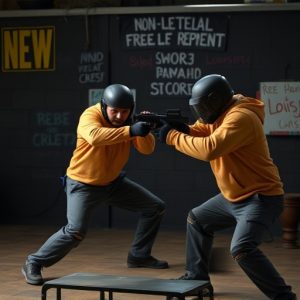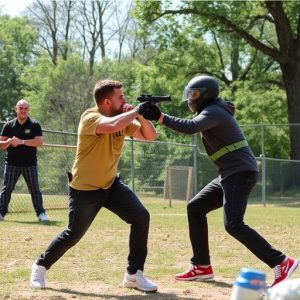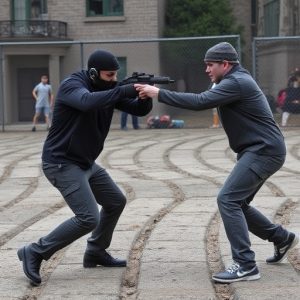Bulk Stun Guns: Optimizing Safety through Pulse Frequency Control
Understanding electrical pulse frequency is critical for designing effective and safe bulk stun guns…….
Understanding electrical pulse frequency is critical for designing effective and safe bulk stun guns for retail stores. Frequencies, measured in Hertz (Hz), directly impact shock intensity and speed, crucial for self-defense. Manufacturers must balance power with safety by controlling voltage levels and current limitations to cater to diverse customers while adhering to regulations and safety standards. Retailers ensure consistent performance through rigorous testing and quality control, partnering with reputable manufacturers committed to safety. Optimizing pulse frequency allows for quick, powerful shocks for rapid neutralization or weaker jolts over time to reduce injury risk, enhancing safety without sacrificing effectiveness.
Stun guns, powerful tools designed for personal safety, operate on a fundamental principle: electrical pulse frequency. This article delves into the intricate world of stun gun design, focusing on the role of electrical pulse frequency in their effectiveness and user safety. We explore how bulk stun guns intended for retail stores must balance power with regulatory compliance, emphasizing the importance of precise pulse control to optimize performance while ensuring user well-being.
- Understanding Electrical Pulse Frequency: A Cornerstone of Stun Gun Design
- Bulk Stun Guns for Retail Stores: Matching Power with Safety and Compliance
- Optimizing Performance and User Safety through Pulse Frequency Control
Understanding Electrical Pulse Frequency: A Cornerstone of Stun Gun Design
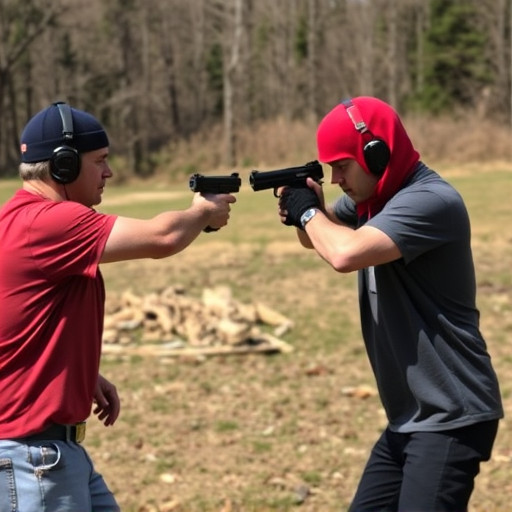
Understanding Electrical Pulse Frequency is a cornerstone in the design and performance of stun guns, especially when considering bulk stun guns for retail stores. This aspect plays a pivotal role in determining how effectively a stun gun can disrupt an attacker’s muscular control, leading to immobilization. The frequency refers to the number of electrical pulses delivered per second, measured in Hertz (Hz). Higher frequencies typically result in more intense and quicker shocks, which are beneficial in self-defense scenarios.
For bulk stun guns destined for retail stores, manufacturers must balance power with safety. While a higher pulse frequency can enhance stun gun performance, it’s crucial to ensure user safety through appropriate voltage levels and current limitations. This is particularly important given that retail customers span a wide range of ages and physical attributes. Thus, understanding pulse frequency becomes essential not only for optimal stun gun functionality but also for responsible product design and compliance with safety standards.
Bulk Stun Guns for Retail Stores: Matching Power with Safety and Compliance
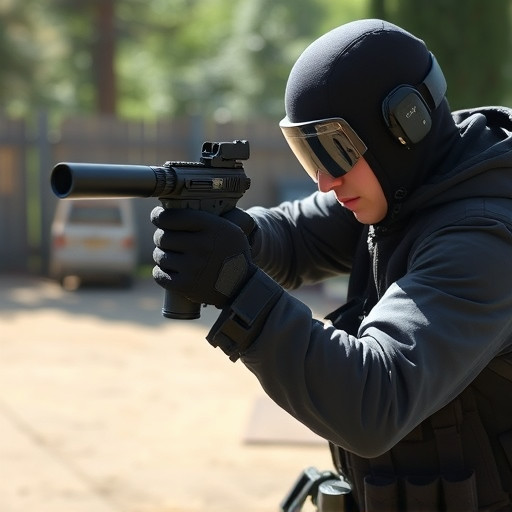
Bulk stun guns for retail stores require a delicate balance between power and safety, especially with stringent compliance regulations in place. When sourcing these devices in large quantities, retailers must ensure that each stun gun meets or exceeds industry standards for shock intensity while adhering to local legal requirements. This involves meticulous testing and quality control measures to guarantee consistent performance across the entire inventory.
Retailers play a vital role in ensuring consumer safety by only stocking stun guns with well-documented electrical pulse frequencies designed to incapacitate without causing serious harm. By aligning with reputable manufacturers committed to safety and compliance, retailers can offer effective self-defense tools while mitigating potential risks associated with improper use.
Optimizing Performance and User Safety through Pulse Frequency Control
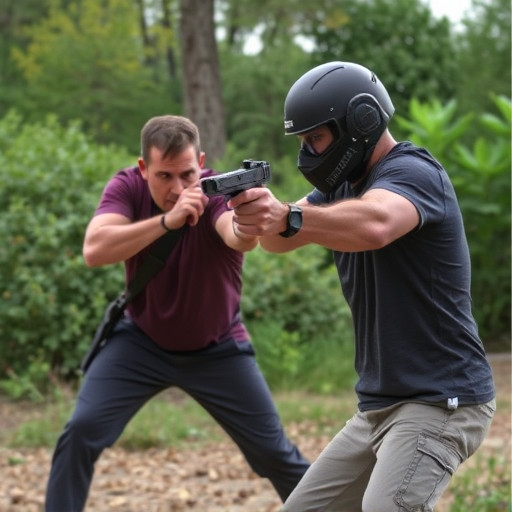
Optimizing Performance and User Safety through Pulse Frequency Control is a key aspect in designing effective bulk stun guns for retail stores. By varying the electrical pulse frequency, manufacturers can tailor the device’s impact to balance power with safety. Lower frequencies produce more intense but shorter-duration shocks, ideal for neutralizing an opponent quickly. Higher frequencies, though less powerful, offer a safer alternative by delivering weaker jolts over an extended period, minimizing the risk of serious injury.
This control is crucial for law enforcement and security professionals who need to deploy stun guns in various scenarios. For retail stores, selecting bulk stun guns with adjustable pulse frequency ensures that staff have a versatile tool that can be used appropriately and effectively, enhancing safety without compromising performance.
In conclusion, understanding electrical pulse frequency is key to optimizing the performance and safety of stun guns, particularly in the context of bulk stun guns for retail stores. By carefully controlling pulse frequency, manufacturers can ensure these devices meet safety standards while delivering effective protection. This balance is essential for providing peace of mind to consumers who rely on stun guns as a personal safety measure.
